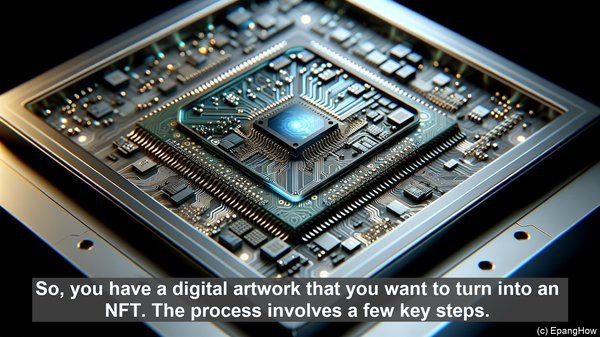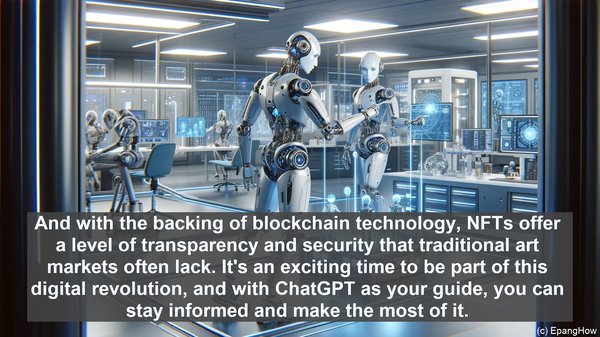Introduction: The Rise of Digital Art and NFTs
Welcome to this article where we delve into the fascinating realm of digital art and NFTs. In recent years, the art world has witnessed a significant shift towards the digital medium, with artists and collectors embracing the possibilities it offers. And at the forefront of this revolution is the concept of Non-Fungible Tokens, or NFTs. But what exactly are NFTs, and why are they creating such a buzz? Let’s find out!

Understanding NFTs: Beyond the Hype
NFTs, in essence, are unique digital assets that can represent ownership or proof of authenticity. Unlike cryptocurrencies like Bitcoin, which are fungible, NFTs are indivisible and cannot be exchanged on a like-for-like basis. This uniqueness is what makes NFTs ideal for representing digital art, as it provides a way to establish ownership and scarcity in the digital realm. But it’s not just limited to art; NFTs can represent a wide range of digital assets, including music, articles, and even virtual real estate.
The Role of ChatGPT: Your AI-Powered Guide
With the vastness of the digital art and NFT landscape, it’s easy to feel overwhelmed. That’s where ChatGPT comes in. Powered by OpenAI’s advanced language model, ChatGPT can assist you in navigating this world. From answering your basic queries to providing insights on market trends, it’s like having an expert by your side. And the best part? ChatGPT is available 24/7, making it a reliable companion on your creative journey.

Exploring Digital Art: A Multitude of Possibilities
Digital art is a realm of endless possibilities. With tools like digital painting software, 3D modeling, and generative art, artists can push the boundaries of creativity. And the digital medium offers advantages like easy experimentation, instant sharing, and the ability to create immersive experiences. Whether you’re a traditional artist looking to explore new avenues or a digital native starting from scratch, there’s something for everyone in the world of digital art.
Creating NFTs: From Concept to Tokenization
So, you have a digital artwork that you want to turn into an NFT. The process involves a few key steps. First, you need to choose a blockchain platform. Ethereum is currently the most popular choice, but there are alternatives like Binance Smart Chain and Flow. Once you’ve selected a platform, you’ll need to create a digital wallet to store your NFTs. Then, it’s a matter of minting your artwork as an NFT, which involves generating a unique token on the blockchain. Finally, you can list your NFT on a marketplace, where collectors can discover and bid on it.
The Marketplaces: Where NFTs Find Their Buyers
NFT marketplaces have emerged as the go-to platforms for buying and selling digital assets. Some of the prominent ones include OpenSea, Rarible, and SuperRare. These marketplaces not only provide a space for transactions but also foster a community of artists and collectors. And with the recent surge in interest, we’re seeing a wide range of NFTs being traded, from digital art by established artists to unique creations by up-and-coming talents.
The Future: NFTs and Beyond
As the NFT ecosystem continues to evolve, we’re witnessing new use cases and innovations. From NFTs representing virtual identities in the metaverse to tokenizing real-world assets like real estate, the possibilities are expanding. And with the backing of blockchain technology, NFTs offer a level of transparency and security that traditional art markets often lack. It’s an exciting time to be part of this digital revolution, and with ChatGPT as your guide, you can stay informed and make the most of it.
